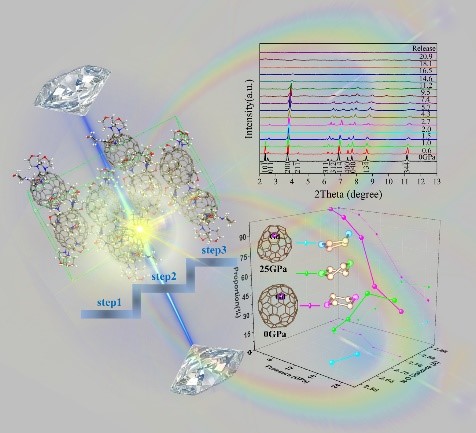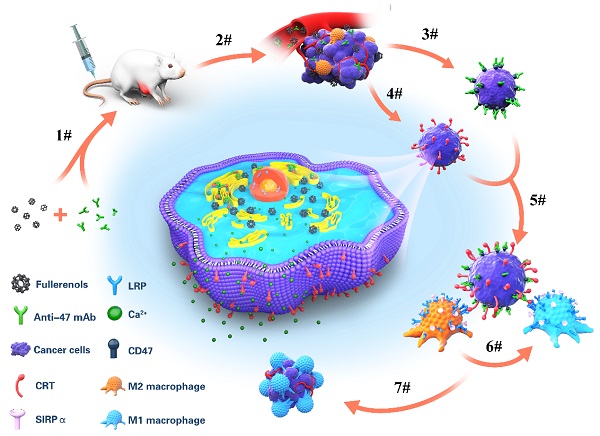Scientists Reveal High Pressure Phase Transition of New Nano-carbon Materials
Prof. SUN Baoyun's group, Prof. ZHAO Lina's group and Associate Prof. LI Xiaodong's group, all from the Institute of High Energy Physics of the Chinese Academy of Sciences, recently used the “zoom-in” phase transition universal method to realize a detailed analysis of the structural deformation and electronic properties of metallofullerenes under high pressure. It is the first case of adding “magnifying glass” microscopy to new carbon phase research. The study, entitled “Carbon phase adjustment by multi-configuration ligand in endohedral metallofullerene derivatives Gd@C82(morpholine)7 under high pressure,” was published in Nano Today.
The development of new materials is important for scientific and technological advancement. High pressure technology is an effective way to change molecular structure, modulate material properties, and synthesize new materials. In this study, high pressure investigation is realized on metallofullerene derivatives (Gd@C82(morpholine)7) by applying in situ synchrotron XRD, Raman, and IR spectroscopy, combined with high pressure density functional theory (DFT) calculations.
Due to the regulations of multi-configuration morpholine bridges and spacers, the direct collapse of carbon cages commonly occurring in fullerenes is avoided. This makes fine structure transformation possible for the first time, including ligand configuration exchange, anisotropic shrinkage of the cage, newly constructed bonds, and even the encaged metal's movement with increasing pressure.
The charge-transfer principle has been found to be the force underlying structural transition. These findings demonstrate that multi-configuration ligands suggest an innovative strategy for phase transition control of metallofullerenes under high pressure, thus providing deep insight, step by step, into the phase transition mechanism of these hybrid molecular systems on the molecular level.
The in-depth study of new nanomaterials places higher requirements on the rational design of materials, on controlling their properties, and on the technology used to characterize materials. This study is a successful case of the “1+1+1>3” research strategy, which combines advanced materials, theoretical analysis and synchrotron radiation technology. Such research may also represent a future application of the High Energy Photon Source (HEPS).
This project was supported by the National Natural Science Foundation of China.

Contact Information
Mr. GUO Lijun
ljguo@ihep.ac.cn
